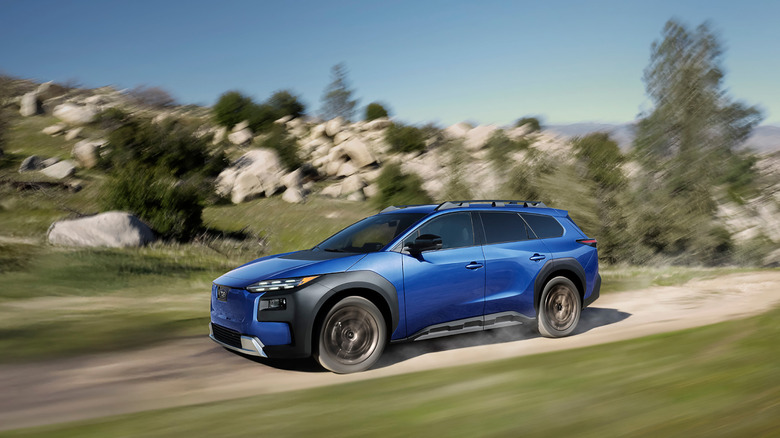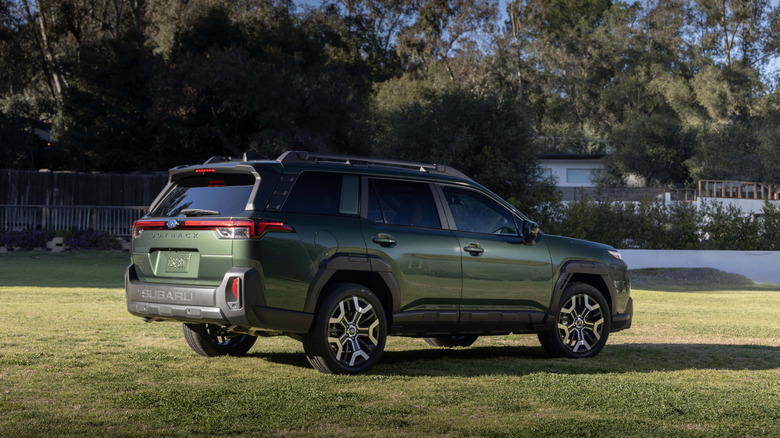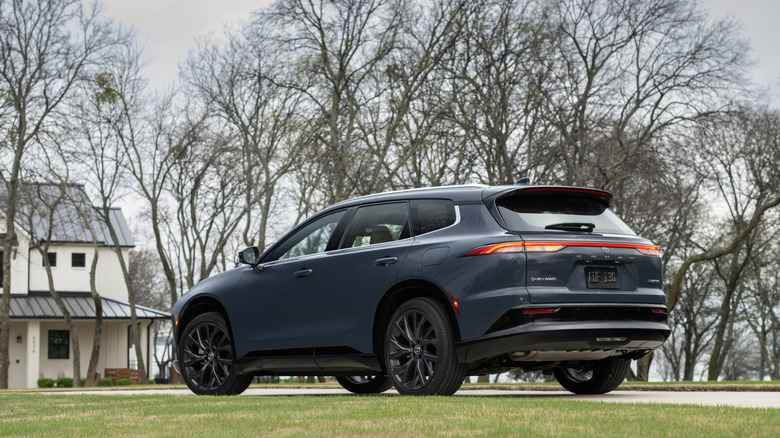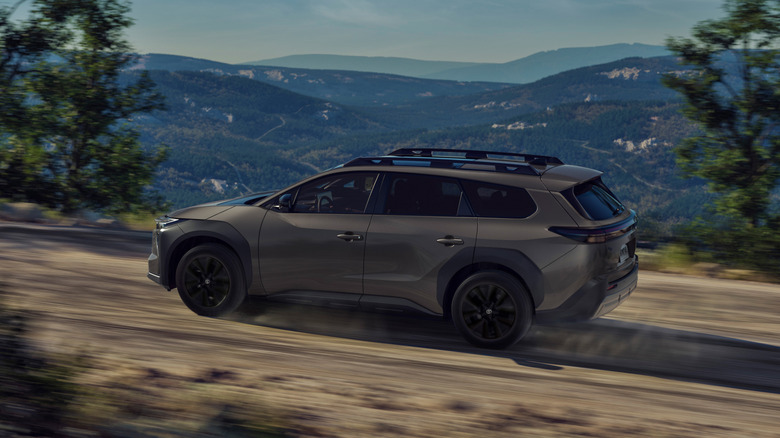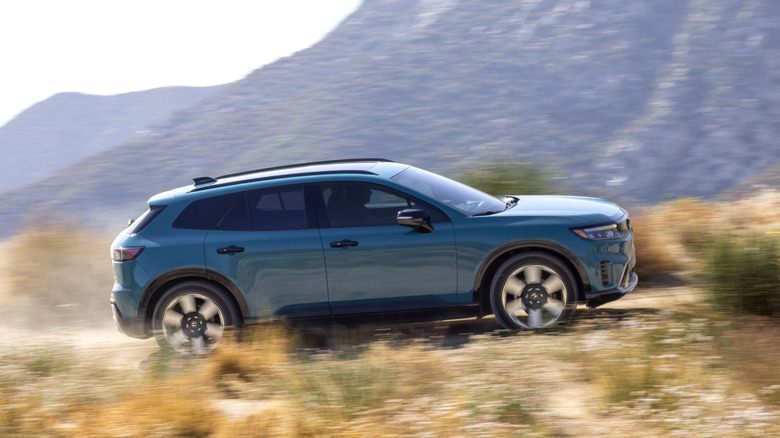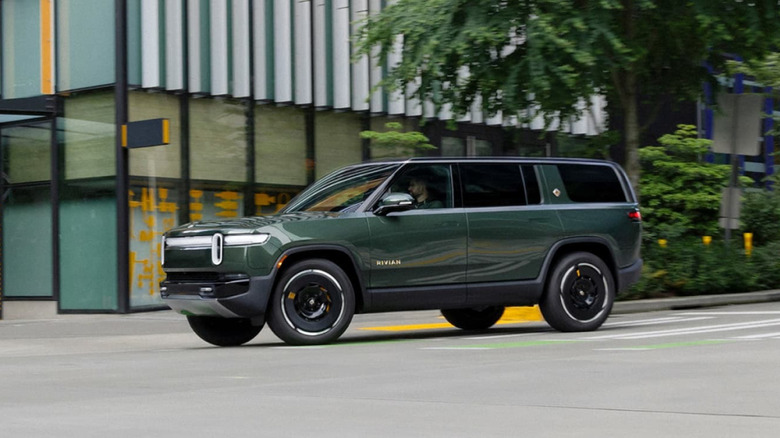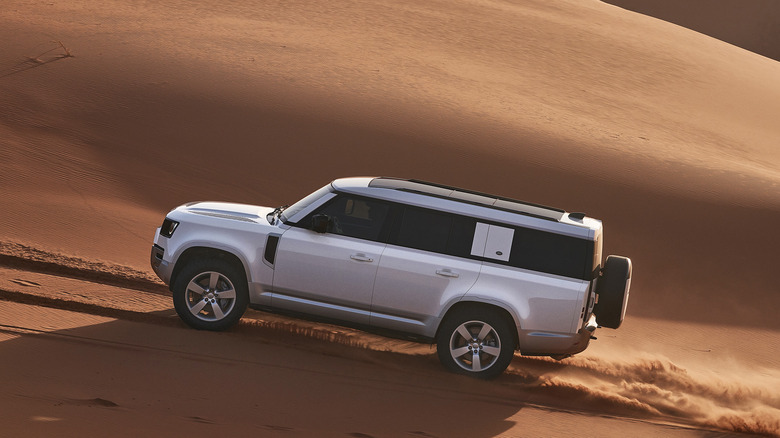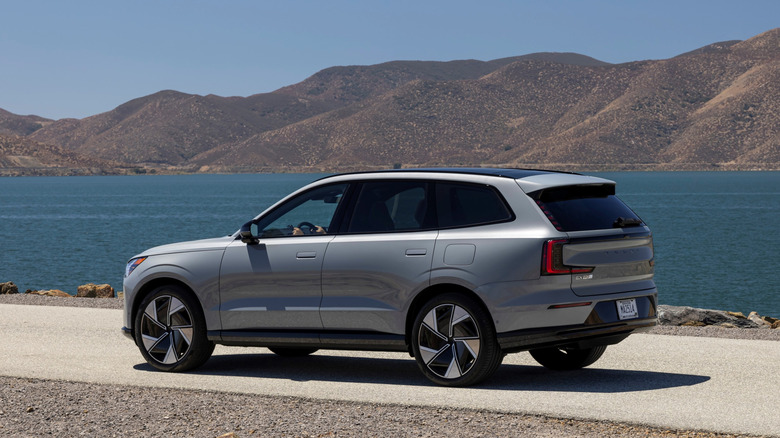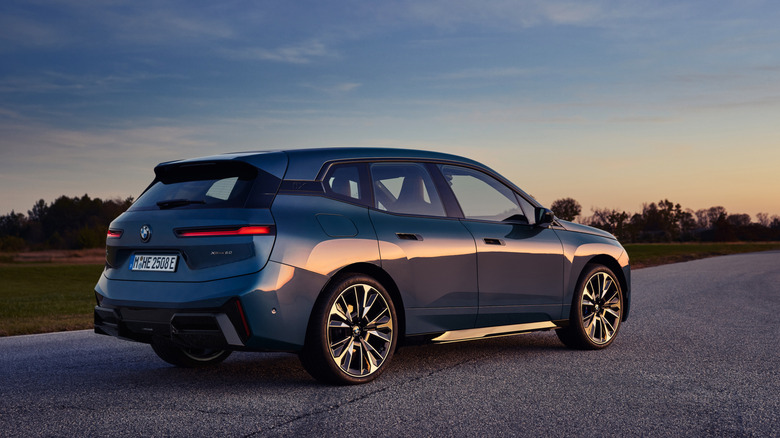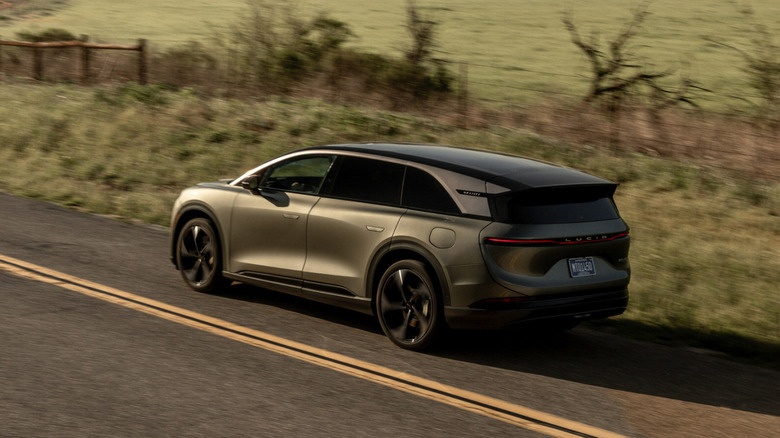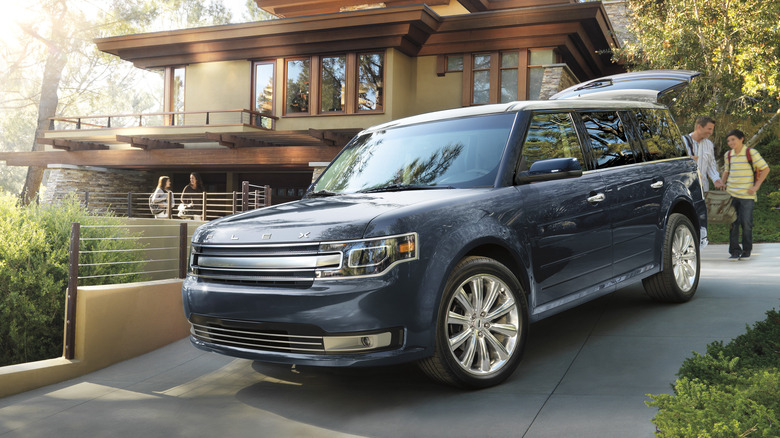10 Modern Cars That Look Like Station Wagons
The station wagon was once the beloved body style of families. Comfortable inside, with an incredibly large cargo area, it had everything a family needed. Some models were even available with three seating rows, because the post-WWII baby boom was a real thing.
Then crossovers and SUVs arrived, and these new kids on the block were also practical, but way cooler. They sat higher from the ground, making you feel more important. More in control. Soon, station wagon sales plummeted, leaving us with only a few, expensive models on sale in the U.S.
Don't worry fellow station wagon lovers, because the soul of these vehicles continues to live inside many SUVs. The wagon body shape is going nowhere, and we'll prove that by giving you 10 modern cars that look like station wagons. Not only that, but we believe that some of these vehicles will slowly return the station wagon to its former glory, though, of course, with a higher ground clearance. Let's dig in!
2026 Subaru Outback
Although not the first wagon/crossover from Subaru, the Outback popularized the segment and spurred similar vehicles from other automakers. Based on the mid-size Legacy sedan/wagon, the Outback was initially available in sedan form as well, but the station wagon shape attracted more buyers.
The Outback used the Legacy platform for six generations, but for the seventh-gen model, Subaru finally broke away. The 2026 Subaru Outback is now more SUV than wagon, with upright proportions that break with its more streamlined predecessors. Generous dark grey body cladding. Boxy, chunky appearance. Massive, overdesigned grille. It's all perhaps a bit too much, but Subaru knows its customers.
The 2026 Outback has certainly lost some of its wagon charm. Still, Subaru was smart enough to give it a relatively long rear overhang, which, if you squint, gives a station wagon-like look. It's not a real one, but perhaps good enough for Outback enthusiasts.
Crucially, the new boxy body has created even more space inside. Always a major selling point of the Outback, the trunk now measures 34.6 cubic feet. Each Outback also comes standard with AWD. Off-road aficionados will also be happy to learn that Wilderness model has a 9.5-inch ground clearance and comes with Bridgestone all-terrain tires. Oh, and, like before, there is a potent 2.4-liter turbocharged flat-four with 260 hp, which is standard on the XT and Wilderness trims. Time will tell if this is enough to convince customers, but crossovers and SUVs fly off the shelves, anyway.
2025 Toyota Crown Signia
Station wagons aren't popular anymore, so Toyota was smart to call the Crown Signia an SUV. In Japan, it's called the Crown Estate, and in most English-speaking countries, estate means station wagon. That said, at 6.7 inches, the Crown Signia has a higher road clearance than a traditional car, but not by much. The 2025 Camry, for example, has 5.4 inches.
Does the Crown Signia pass the eye test, though? Well, overall, its proportions are somewhere between a wagon and an SUV. A good comparison would be the 2025 Highlander, which shares the 112.2-inch wheelbase of the Crown Signia. However, the Crown Signia is 4.1 inches lower, and 2.0 inches narrower, while being only 0.8 inches shorter, resulting in a sleeker look. It's attractive as well, with an understated, elegant design.
Some find the 2025 Crown Signia weird, but it's a good car. It comes standard with Toyota's ubiquitous AWD 2.5-liter hybrid powertrain, good for 240 hp and a 0-60 sprint of 7.1 seconds. Fast enough for most people, but don't expect any amount of engagement behind the wheel. You can expect 38 mpg combined, a stellar efficiency figure for a vehicle of its size.
And that's not even the most impressive part; Crown Signia's interior offers quality and comfort that approaches Lexus levels. The same is true for the ride and noise isolation. Passengers will be very comfortable, too, and the cargo area is reasonably spacious, making the Crown Signia an interesting wagon/SUV proposition.
2026 Subaru Trailseeker/2026 Toyota bZ Woodland
Until a few months ago, no adventure-focused station wagon/SUV with an electric powertrain had reached the market. No, we don't count the Porsche Taycan CrossTurismo, because it's too expensive. It also lacks the practicality of the Subaru Trailseeker and Toyota bZ Woodland. Instead, it's Toyota and Subaru, of all brands, who quietly collaborated to build EVs buyers really wanted.
Just like with the Outback and Crown Signia, you won't see "station wagon" mentioned anywhere in the marketing materials, but, come on, these EVs scream "wagon." Essentially, they are the same cars as the Solterra and bZ, with a longer rear overhang. Sure, their 8.3-inch ground clearance is more SUV-like, but it only makes them look more like the previous-gen Outback station wagon.
With 30 cubic feet of cargo space, the Trailseeker and bZ Woodland are significantly more practical than the Solterra and bZ (27.7 cubic feet) — you know, just as you'd expect from a station wagon. Passengers should be comfortable, just like in their smaller siblings, too. They even have a great 3,500-pound cargo capacity and standard AWD with off-road modes.
Yet, it's all about utility — these lifted wagons are also performance beasts. With the standard, 375-hp dual-motor powertrain, the Trailseeker and bZ Woodland should reach 60 in well below 5 seconds. The 260-mile range, although not impressive, should be enough to get you deep into the wilderness, too. Once depleted, you can use Tesla's Supercharger network, as both come with the NACS charging port.
2025 Honda Prologue
The Prologue is a solid first EV effort for Honda, though it's really a Chevrolet Blazer EV underneath. In the absence of a suitable in-house electric drivetrain, Honda borrowed GM's Ultium architecture for its sleek EV crossover. As a result, the Prologue has a relatively big 85-kWh battery, good for an EPA-estimated 308-mile range for the entry-level front-wheel-drive model with 212 hp. An AWD version with 288 hp is also available, but with a lower 283-mile range. Far from impressive, especially when compared to some of its rivals, but perhaps fine for an electric crossover.
What's not fine is the practicality. The Prologue has a wagon-like appearance, with an upright rear end. It's also 192 inches long, yet it only has a 25.2-cubic-foot cargo area. That's 2.5-cubic feet less than the 2026 Toyota bZ, which also happens to be 7.4 inches shorter. Heck, the bZ Woodland is also shorter than the Prologue, yet it has a massively bigger trunk. The Prologue looks very attractive, yes, but we expected more from the wagon-like body. Oh, and if you wondered, there is no "frunk."
Honda could've also injected some of its Type R magic in the Prologue. After all, the 288-hp version is quick, with a 0-60 time of 5.9 seconds. Still, the Prologue is largely uninspiring to drive. The cabin is soul-crashing, too, with a generic-looking dashboard. At least the ride is comfortable, and there is ample passenger space.
2025 Rivian R1S
Want an electric SUV that takes wagon-like proportions to the extreme? The Rivian R1S sets a new benchmark in the three-row electric SUV category. It's very spacious inside, with ample passenger space and a 48.6-cubic-foot cargo area with a folding third row. It's got a practical interior, with many nooks and crannies, and the choice of materials is excellent. Add to that a sizeable 9.9-cubic-foot trunk, and the R1S emerges as one of the most practical EVs.
To maximize space and utility, Rivian opted for a boxy, Land Rover Defender-like body. The rear end is super vertical, with a long overhang giving it three-row capability. Still, Rivian's design touches give the R1S a modern, and from some angles, even a futuristic appearance. The designers blended the boxy, wagon-like proportions and futuristic design elements almost perfectly — the R1S is truly an attractive SUV.
It gets even more attractive when you look at the figures. The standard 2025 R1S Adventure has a dual-motor powertrain with 533 hp, and a 95.5-kWh battery, good for a 270-mile range. You can opt for a larger 141.5-kWh battery pack, though, which pushes the range to 410 miles. Maybe you decided that 533 hp isn't enough for you? Rivian also offers Tri-Motor and Quad-Motor versions with 850 hp and 1,025 hp, respectively. The latter sprints to 60 in less than 2.6 seconds. In a three-row family SUV, that's honestly bonkers. Oh, and we haven't even touched the R1S' excellent off-road capabilities!
2025 Land Rover Defender 130
If you're not convinced by EVs, but still want a three-row, off-road-capable SUV with wagon-like proportions. Land Rover has just the right model for you — the brand-new Defender 130. This massive SUV has that old-school Land Rover design we all love, with an extra dose of aggression. Its rear end is decidedly wagon-like, with a particularly long overhang. Hardly surprising, as Land Rover kept the same wheelbase as the Defender 110, but stretched the rear end by 13.4 inches! The end result: a length of 211.7 inches, nearly as much as a Cadillac Escalade.
It's huge, and very expensive, but the Land Rover Defender 130 is the best of both worlds — a family hauler on one end, and an off-roader on the other. This brand-new model has proven its off-road mettle, and as you'd expect from its massive footprint, the Defender 130 has ample room for passengers inside, too. The five-seat Outbound trim we tested also has a huge 35.8-cubic-foot cargo capacity behind the second row. With all rows down, you're looking at an 89-cubic-foot capacity. Land Rover truly maximized the overlanding game with this one.
It's good that the British brand also equips the Defender 130 with relatively powerful engine. The base 3.0-liter inline-six is both supercharged and turbocharged, delivering 395 hp and 406 lb-ft of torque. 0-60 takes 6.2 seconds. But we know you all want the supercharged, 493-hp V8, which takes this dinosaur to 60 mph in just 5.4 seconds.
2025 Volvo EX90
The 2025 Volvo EX90 aims to repeat the success of the XC90, with a similar design approach. The smooth, flowing lines are unmistakably Scandinavian, giving the EX90 a sophisticated look. The wagon-like rear end emphasizes practicality, without disturbing the proportions. The head and taillights look futuristic. Save for the bulge atop the windshield, the EX90 is a handsome SUV.
It gets even better inside. Volvo's cabins have always been accommodating and luxurious, and EX90's is no exception. The material choice inside is truly amazing, with Volvo even offering Nativa-certified wool blend seat finishing in higher-end trims. The EX90 also offers enough space in the second row, particularly if you opt for the six-seat model, and the third row is usable, too.
The Android Automotive OS that runs on the large 14.5-inch touchscreen is also streamlined and cohesive, though it (sadly) also houses the climate controls. Hi-Fi nerds will also love the 25-speaker Bowers & Wilkins stereo system with Dolby Atmos. That bulge atop the windshield? It's an advanced LiDAR sensor that should, after a future software update, provide autonomous driving. For now, though, Volvo only uses it to enhance the driver's assistance systems.
Unsurprisingly, the EX90 offers some serious grunt. It's available in two dual-motor configurations, with 402 hp and 510 hp. The latter is good for a 0-60 time of 4.5 seconds. Yes, we agree, EVs are becoming too fast nowadays. The battery supplying the motors with electricity has a 107-kWh capacity, enough for 300-310 miles of range.
2026 BMW iX
The iX is one of many recent unsuccessful BMW visual designs. The proportions are okay, but the 8.7-inch ground clearance gives it a somewhat chunky SUV vibe, and the body surfacing is a story in itself. The front end is sharp and aggressive, with geometric details. The kidney grilles — angular. Same for the cooling vents below and on the sides. Heck, even the front bumper is angular.
And from the side, the BMW iX a different story entirely. The fluid, almost bulbous surfaces make BMW's EV look like its melting. Furthermore, the window line tapers up near the end, creating a huge negative area over the rear wheels. The station wagon-like rear end is slightly better, but hardly the pinnacle of car design.
And while the refreshed 2026 BMW iX is cheaper and a better EV, BMW did little about the new entry level model's looks. Take "entry level" with a grain of salt, though, because the iX xDrive45 has a 402-hp dual-motor powertrain. Meanwhile, the xDrive60 got a 20-hp hike over the previous xDrive50 model, while the xDrive70 replaced the xDrive60 with 40 more horses. The most powerful variant sprints to 60 in 3.6 seconds, same as before.
The iX handles all that power with ease, and thanks to the addition of rear-wheel steering, the xDrive70 feels more agile than before. The air suspension also gives it a smooth ride. In addition, the range has also increased; the xDrive60 can now travel 364 miles on a single charge.
2025 Lucid Gravity
Lucid's first-ever car, the Air, changed the EV game with an industry-leading efficiency of 5 miles per kWh, translating to a 420-mile range with the relatively small 88-kWh battery, or 512 miles with the larger 118-kWh pack. Still, to truly attract buyers, Lucid needed an SUV.
Not content to follow the norm, Lucid didn't follow what the others did and launched a truly unique vehicle: the Gravity. This part-SUV, part-minivan, part-station-wagon car promises vast interior space, with the high performance and efficiency you'd expect from Lucid. And, spoiler alert: it succeeds on all fronts.
With up to 1,070 hp on tap and an interior that sets new standards for space and practicality, the 2025 Lucid Gravity is where supercar meets minivan. Inside, the Gravity offers up to 120 cubic feet of cargo capacity, which enters van territory. Meanwhile, passengers in each of the three rows have enough room for stretch exercises on longer journeys. It's a nice interior, too, with good material choice and dashboard layout.
Lucid also showed its prowess in creating excellent driving machines. Every EV is fast, but the Gravity with the Dynamic Handling Pack also dances through the corners — unbelievably so for a 6,000-pound vehicle. Yet, thanks to the adjustable air suspension, you can select the Smooth mode and give your passengers a Rolls-Royce-like ride. Add to that up to 450 miles of range, and the Gravity is truly one of the greatest high-performance, long-distance cruisers.
2019 Ford Flex
We know that the Ford Flex isn't the most modern vehicle around, discontinued in 2019. Still, it's the only SUV around with a 1970s American station wagon vibe. Its boxy appearance might not be to everyone's liking, but it's definitely got a lot of personality. Cool is probably the right word to use.
Ford chose the car's boxy, angular shape to open up as much space inside as possible. The Ford Flex delivers on the practicality front with an incredibly spacious interior. It accommodates seven passengers in absolute comfort, while also carrying all their cargo. The Flex is truly an example of why station wagons make most sense for family buyers.
Oh, and let's not forget that Ford also offered the Flex with a potent, 365-hp 3.5-liter twin-turbo EcoBoost V6. Yup, this cool wagon/SUV also has some serious grunt. 0-60: 6.2 seconds. What impresses even more is how easily the Flex handles all that power — the driving experience is top-notch.
The lack of a modern infotainment system hurts the Flex's long-trip capabilities a bit, until you find out that 2017-2019 Ford Flex models have Android Auto and Apple CarPlay. There you go — a super-practical, fast, and cool used car. For less than $15,000!
